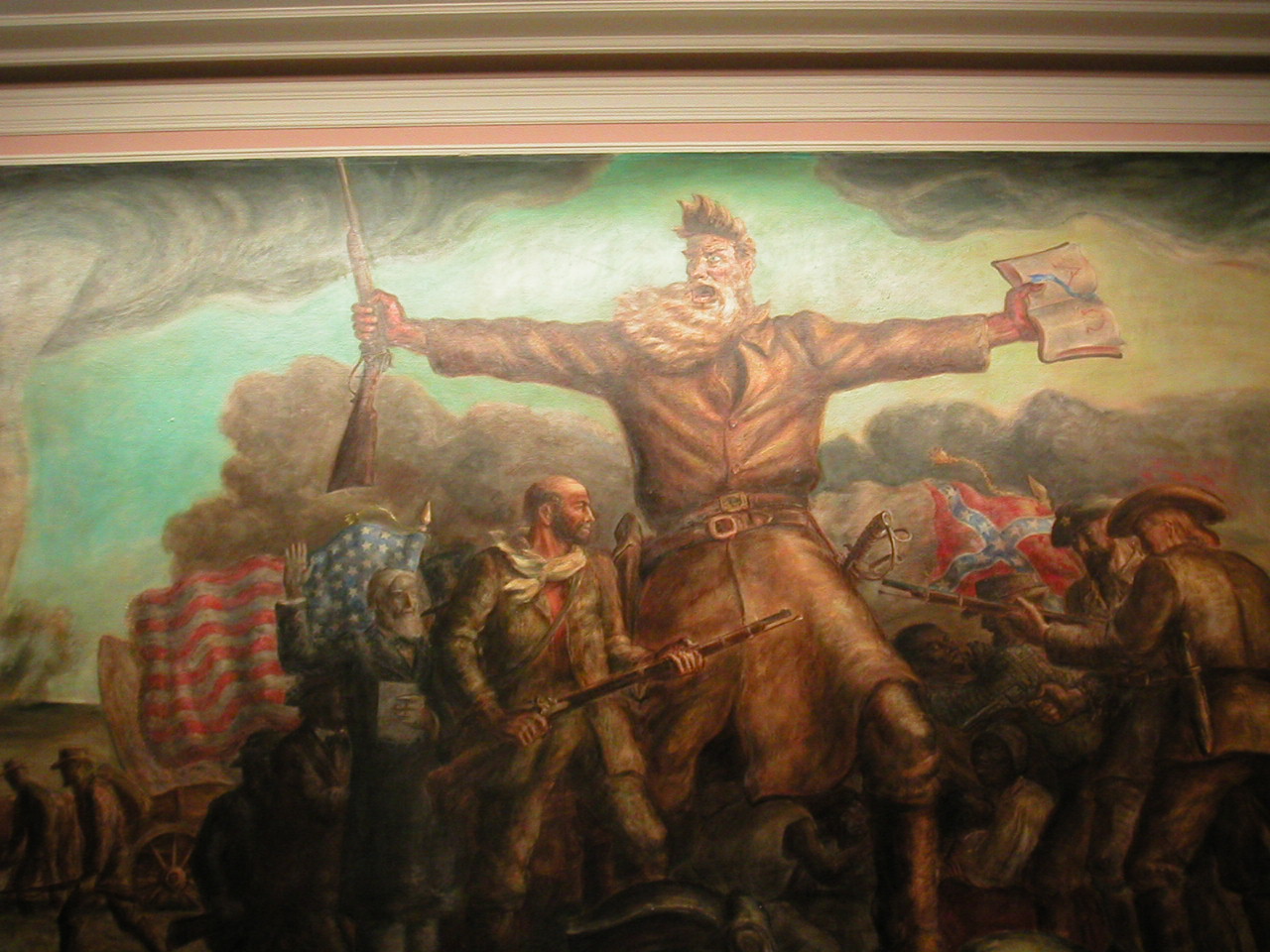John Brown was a man of deeply held beliefs who ended his life pursuing violence as a means of creating great social change. He is best known for his daring raid on a federal arsenal and the very public trial and execution that resulted from his capture. He died at 59, convinced his cause was right. He was born in Torrington, Conn., at the turn of the 19th Century, at a time when the U.S. and the world around it were undergoing rapid changes in some areas and stagnating in other areas. Technology was reshaping the way people travelled and the way they communicated. As young John was growing up in New England and then in Ohio, he learned a few passions from his father, foremost of which were an appreciation of business success, a need for keeping a strong religious faith, and a burning desire to eradicate slavery.  John's father was a farmer and tanner, and John learned both trades, carrying those skills into his adult life. Married young (and twice, eventually), he held a number of jobs to try to make ends meet and found varying success doing it. In addition to farming and tanning, he also tried his hand at selling wool and property. Brown and his family moved a few times, living in Massachusetts, New York, Ohio, and Pennsylvania. He was in the end the father of 20 children, and his large family needed more support than he alone could give. At one point in his 40s, he declared bankruptcy. He seemed to find money to support causes he believed in, however, including helping runaway slaves escape on the Underground Railroad. He helped establish the abolitionist organization the League of Gileadites, and he chipped in to help fellow abolitionist print pamphlets of their famous speeches. He gave land to runaway slaves and even helped bring up an African-American child as his own. When he was living in Springfield, Mass., Brown met Frederick Douglass, the eminent African-American abolitionist who counted Abraham Lincoln as his acquaintances. Among the issues the two men discussed was Brown's plan to lead a war on behalf of slaves, with freedom as the goal. Brown later met Harriet Tubman, the most famous "conductor" on the Underground Railroad, and encouraged her to continue in her dangerous task of escorting escaped slaves to freedom. Brown himself was a "conductor" for a time and advocated making Kansas, not Canada, the end of the line. Brown and a dozen of his men also traveled to Chatham, Ontario, in Canada to pursue a formal legislative agenda. At a self-styled Constitutional Convention on May 8, 1759, a few dozen people voted to adopt a provisional constitution, after approving a Declaration of Independence for slaves. Brown was elected not president but commander-in-chief. A deeply religious man, John Brown nonetheless found a way to justify violence in the name of what he saw as a greater good. In the early 1850s, Brown moved to the newly created Kansas Territory, where five of his sons lived. They joined other violence-leaning abolitionists in fighting back against proslavery gangs. Kansas at this time was at the center of a dispute over slavery ownership. Neighboring Missourians could own slaves under the Missouri Compromise. The Kansas-Nebraska Act gave citizens of the Kansas Territory and the Nebraska Territory the right to let Popular Sovereignty decide whether slavery was allowed in their territories. The conflict was so violent at times in and around where Brown was living that the territory was called "Bleeding Kansas." A devastating raid on the Kansas town of Lawrence in 1854 left the town in ruins and many people dead. In response, Brown and others killed five people in a proslavery town. Not long after this attack, Brown moved back to the eastern United States, to pursue his goal of a war against slavery. He lived once again in Springfield, Mass., where he tried to raise money for and interest in his cause. He eventually attracted dozens of followers who found merit in his plan to establish a base in the Blue Ridge Mountains. Brown, however, changed his mind and his tactics and decided on a more drastic course of events. Rather than waiting for word of his cause to spread, he decided to take matters (and weapons) into his hands. He and his sons and several other followers rented a farm in Maryland, across the Potomac River from Harpers Ferry, Va., home to a federal arsenal and weapons manufacturers. Brown's impatience created in him a drive to do something along the lines of the Kansas raid, something that would gain him attention and, he hoped, more followers and funding. This culminated in his raid on Harpers Ferry, after which he was captured, found guilty of treason, and executed. He died on Dec. 2, 1859. Brown's famous statement before he was hanged lived on in the popular imagination. His calm acceptance of his fate during and after a sensational trial that was covered by media up and down the country helped make him a martyr in the North. His cause, the abolition of slavery, was eventually fully embraced by the Union as a primary reason for winning the Civil War. A song written about him, "John Brown's Body," became a marching song for Union troops during the war |
|
Social Studies for Kids
copyright 2002–2025
David White


